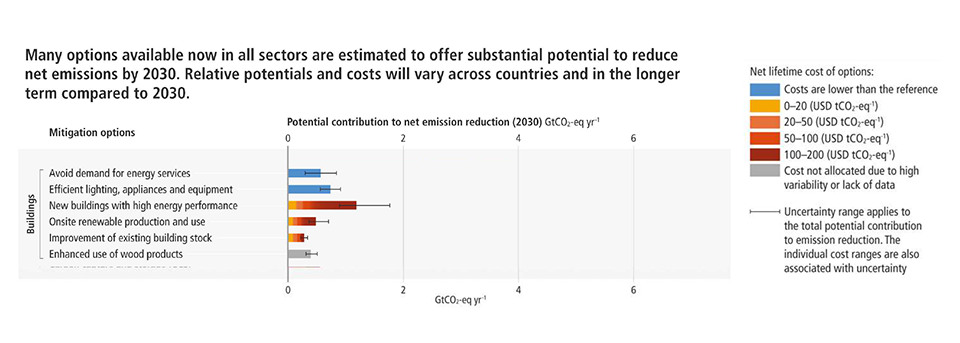
IPCC report: Achieving climate goals only possible with immediate action
We have experienced the largest increase in greenhouse gas emissions in human history and if we are to have a chance in limiting global warming to 1.5 ° C immediate multisectoral action is required. Meanwhile, significant progress is being made in many places and the opportunities to limit climate change and to achieve synergies with other global sustainability goals are great both in the short and medium-term perspective, according to the UN climate panel IPCC.
One of the largest sources of emissions globally is the construction sector, both through emissions from the production of building materials, the construction phase, and over the total lifetime of buildings. In 2019, global greenhouse gas emissions from buildings accounted for 21 percent of global greenhouse gas emissions.
.jpg)
Érika Mata
– The pace of measures until 2030 is crucial for fully capturing the limiting potential of buildings, says Érika Mata, researcher at IVL Swedish Environmental Research Institute and IPCC's lead author of chapter 9 Buildings.
The global building stock - existing and not yet built - can approach net zero greenhouse gas emissions by 2050 through efficient design, construction and use, construction with low-carbon materials, by limiting energy and material demand, and through renewable energy production. Together, the measures lead to cost reductions, while optimizing the achieved limitation potential and avoiding lock-in effects.

– Political measures could capture the full potential if requirements are placed on all these components, ie. demand, efficiency and production. It can be a combination of building energy rules, standards for energy efficiency and market instruments. Well-designed and effectively implemented policy packages, including funding, that combine mitigation and adaptation measures have significant potential for achieving global sustainability goals, including in public health, the labor market and poverty reduction, says Érika Mata.
Collaboration across sectors
More and more cities are setting net targets for zero greenhouse gas emissions and there are now examples of zero-energy or zero-emission buildings in almost all regions. Many cities also have the power to take climate action due to their mandate over regulations and policies related to land use. Limitation strategies to reduce greenhouse gas emissions will vary depending on a city's land use and spatial shape and its urbanization status.
In established cities, it comes down to improving or modernizing buildings, supporting pedestrian and bicycle traffic and public transport. In fast-growing cities, future emissions can be avoided by co-locating jobs and housing, and by switching to low-emission technologies or avoiding fossil fuels altogether. New cities can plan urban areas based on people's needs with energy-efficient infrastructure and services. In more informal settlements, there are opportunities to utilize and enable informal methods and institutions in cities related to housing, waste, energy, water, and sanitation to reduce resource use and mitigate climate change.
Coming years are critical
– Given the regional and global reach of urban supply chains, a city can not achieve net zero greenhouse gas emissions by simply focusing on reducing emissions within its administrative boundaries. In the same way, the construction sector is closely linked to, among other things, the energy sector, land use, resource use and waste management. The restructuring of the construction sector therefore requires strong collaboration with many other sectors, says Érika Mata.
Ambitious emission reductions require joint decision-making from government ministries and at different levels of government. It is particularly effective when it is built on the involvement of civil society, different origin groups, professional organizations, business and the financial sector. The coming years will be critical. The decisions that are made now affect how societies develop.
Ambitious climate goals also require strong international cooperation. Transnational partnerships play a more important role as technology, knowledge and experience are shared. For example, cooperation between states leads to increased ambition and climate policy development. Supporting low-emission technological innovation also requires an increased technological impact from policies and investments, such as scientific education, research and development.
For more information, please contact:
Érika Mata, erika.mata@ivl.se, phone +46(0)736 20 04 28
Sara Malmheden, press officer, sara.malmheden@ivl.se, phone +46(0)10-788 65 10

